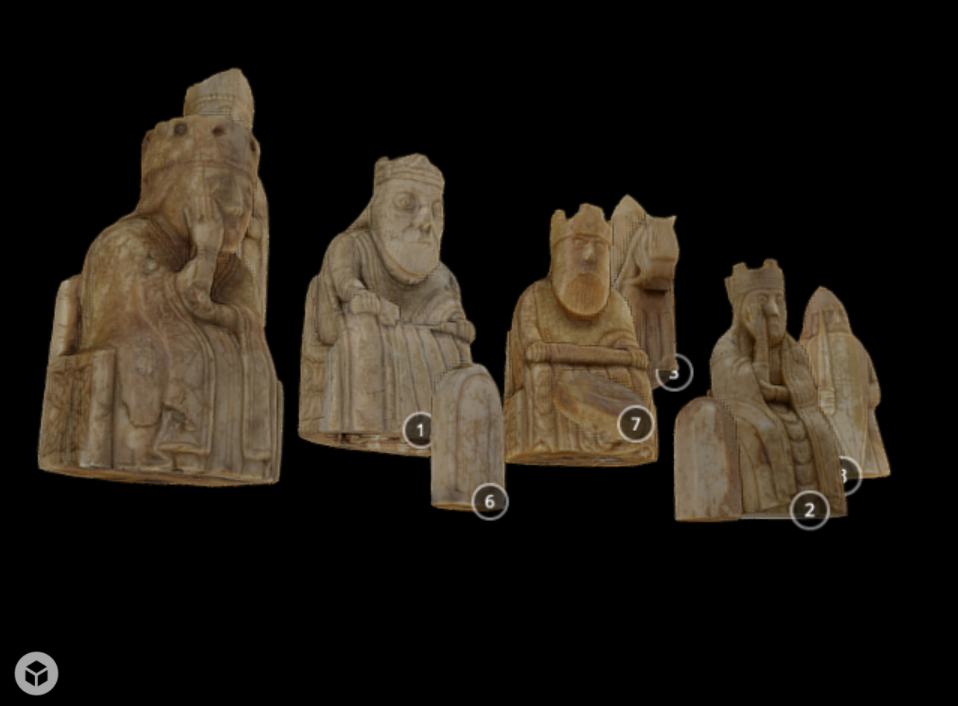 Inspired by the work of University College London and its 3D printing project MicroPasts, funded by the Arts and Humanities Research Council, the British Museum has been providing 3D models and printable files for anyone on the Sketchfab platform, simplifying the process for casual desktop 3D printer users to print objects on display at the museum.
Inspired by the work of University College London and its 3D printing project MicroPasts, funded by the Arts and Humanities Research Council, the British Museum has been providing 3D models and printable files for anyone on the Sketchfab platform, simplifying the process for casual desktop 3D printer users to print objects on display at the museum.
The British Museum, which was established 264 years ago in London, has more than 8 million works on display in its permanent collection covering human history, art and culture. According to sources, the British Museum is among the largest and most comprehensive museums in existence.
As the British Museum gained significant popularity over the past few decades and the establishment became a major tourist spot for travelers, the operators of the museum hoped to offer a unique service to visitors and history enthusiasts that would add even more value to their visits to the location.
After months of research, the British Museum has finally introduced a platform that allows visitors to easily replicate some of the 8 million works on display at the location. According to the British Museum team, the platform and the service were developed around the principles of open science and with the core vision of offering a cheap and quick method for anyone to replicate its works.
“We used a technique called photogrammetry (multiple photographs taken in a strategic pattern around the object) and the resulting output was rendered in 3D software. Ideally anyone, an individual or institution, should be able to replicate our methods to create 3D representations of archaeology or artworks,” said the British Museum.
 In the upcoming months, as the museum continues to test its 3D printing platform, the organization aims to cooperate closely with the British Museum Company, the commercial arm of the institution, in order to utilize 3D printing models and virtual reality to potentially monetize the museum’s work outside of its London location.
In the upcoming months, as the museum continues to test its 3D printing platform, the organization aims to cooperate closely with the British Museum Company, the commercial arm of the institution, in order to utilize 3D printing models and virtual reality to potentially monetize the museum’s work outside of its London location.
Specifically, the British Museum has revealed that its commercial arm has been collaborating with companies in various industries including the gaming and creative markets to utilize VR and 3D printing to incorporate the museum’s works in creative and innovative ways.
One of the few partnerships the British Museum has established in the past few months is its strategic relationship with ThinkSee3D, a 3D modeling company that is using its new techniques to create high quality items for the museum’s Grenville shop. Essentially, ThinkSee3D took several of the British Museum’s existing works, scanned and modeled them with 3D imaging technology and replicated them in smaller sizes with 3D printers as souvenirs for visitors and travelers.
Moving forward, the British Museum intends to continue its partnership with ThinkSee3D and create more unique and special 3D printed replicas of its works. Currently, the ThinkSee3D research and development team is actively investigating the possibility of commercializing other materials that can be used to 3D print the works of the British Museum. In fact, ThinkSee3D has even developed a method to replicate the works of the museum with chocolate, bronze and clear resins.
“ThinkSee3D have now developed a range of products for sale, starting with the Statue of Roy, Priest of Amun (shown above as a 3D capture from which the mould was created). It has been cast from reusable moulds in Jesmonite (a water-based resin commonly used in museums), with the potential to produce in the material of your choice – bronze, clear resins, or even chocolate,” revealed the British Museum.
Discuss in the British Museum forum at 3DPB.com.
[Source/Images: The British Museum]
Subscribe to Our Email Newsletter
Stay up-to-date on all the latest news from the 3D printing industry and receive information and offers from third party vendors.
You May Also Like
Air Force Awards Fortius Metals $1.25M to Qualify 3D Printing Wire for Hypersonic Applications
AFWERX, part of the US Air Force Research Laboratory (AFRL), awarded a Direct-to-Phase II Small Business Innovation Research (SBIR) contract worth $1.25 million to Colorado’s Fortius Metals, to accelerate qualification...
US Air Force Awards JuggerBot $4M for Large-format Hybrid 3D Printing
Large-format 3D printer manufacturer JuggerBot has received a $4 million grant to develop a large format 3D printer, courtesy of the Under Secretary of Defense, Research and Engineering Manufacturing Technology...
Where Have All AM’s Unicorns Gone?
In the rapidly evolving world of 3D printing, startups valued at over a billion dollars, known as unicorns, once seemed as fantastical as the mythical creatures themselves. While a few...
How My Childhood Fascination with Planes Led to Investing in 3D Printing
My fascination with aerospace started young, and I started studying planes–identifying them in the sky and learning everything I could about how they work. Fast forward to my first week...
































